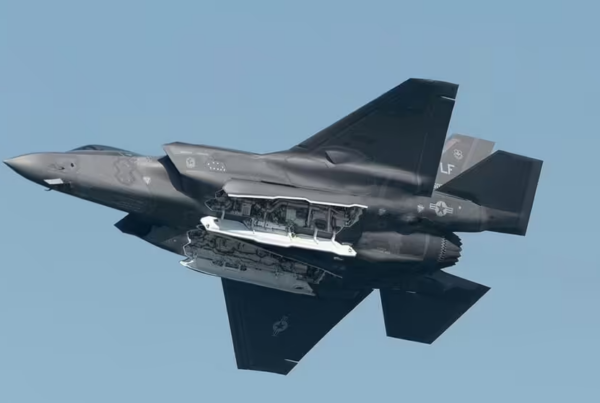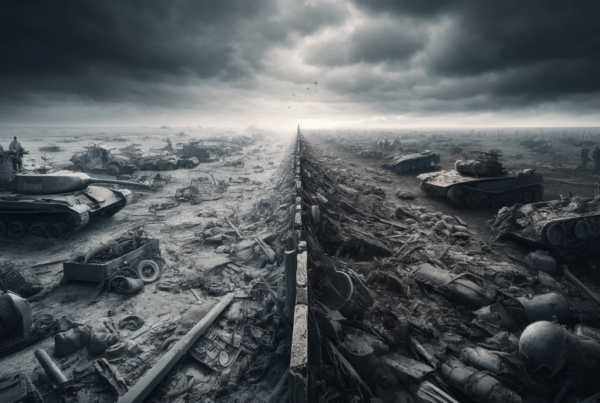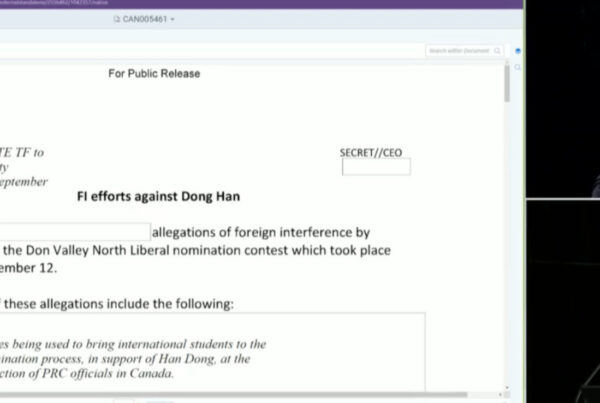“Soap and education are not as sudden as a massacre, but they are more deadly in the long run.”
— Mark Twain, 1900
It can be argued that much of contemporary peacekeeping would not be all that unfamiliar in principle to many soldiers in history. Peacekeeping is what soldiers do between wars, when they are lodged on the frontiers of civilization. Ask a Captain of Chariots in Pharonic Egypt, a Roman Centurion, a Han Chinese Cavalrymen, or Tommy Atkins in his red coat and solar helmet what to do about a place like Afghanistan, Chechnya, Kosovo or Sierra Leone… They would know the answer.
Before the usual labels come out – it is important to say that Afghans, Chechens, Kosovars or Sierra Leoneans are not barbarians, or rather that barbarism is a state of existence, but not a state of being. Will Durant, in “The Story of Civilization”, attempted to define the difference between civilization and barbarism. He couldn’t, and thought the transition between the two was gradual. There is no reason to doubt him on this score, but civilization can normally be discerned by a higher degree of safety, the permanence of its institutions, the ability to focus resources for large public works, an expectation of property rights and an idea that that law should supersede natural justice. This is nothing like a proper definition, but the difference between Afghanistan and Austria, Kosovo and Kuwait, or Sierra Leone and Singapore becomes more apparent.
Nor is it right to accuse Afghans, Kosovars or Sierra Leoneans of being barbarians. Given a choice, most of the people there would certainly prefer the conditions of life that prevail in Austria, Kuwait or Singapore. However, the circumstances of geography, nature, culture and geopolitics combine to perpetuate a barbaric situation that has endured for over a generation.
Civilizations produce soldiers – trained and disciplined specialists under arms and with unique status in their society. Soldiers are normally held in restraint until their government orders them to accomplish something. Barbarian regions produce warriors – adult males (usually) who have survived the conditions of their life long enough to become proficient in the use of violence. This proficiency can be exercised in self-defence, for fun and profit, or for aggrandizement. While it can be directed at other warriors, its most common impact is upon non-warriors
Periodically, civilizations must confront the Barbarian reaches: This can be done for strategic reasons (which is why Victoria’s Britain and the USSR got their noses bloodied in Afghanistan). It can be done to keep order on the frontier and keep trade flowing; which is why the British and Dutch waged a centuries long war against the Pirates of Indonesia – who have lately returned anyway. Sometimes, intervention is necessary for humanitarian reasons… Britain went into much of Africa to halt the slave trade and NATO intervened in Kosovo to prevent what looked to be (at the time) a looming campaign of genocide. With the revival of peacekeeping in the Post-Cold War world, the soldier has had to confront the warrior in a number of barbarian areas.
Whatever the reasons, when the soldiers retreat out of these regions, barbarism re-emerges unless the conditions that let it flourish have been changed. There are barbarian regions that have changed: Western Europe for one, with the last hold-outs (some of the writer’s own ancestors) being the Highland Scots who were finally curbed in the early 18th Century. Large swathes of Africa and Asia are now under the control of their own civil – more or less – governments. Other regions, like southern Colombia, Afghanistan (still), much of West Africa or portions of the Indonesian Archipelago have reverted to barbarism. It could also be argued that portions of the Balkans (such as rural Albania) have never left that state.
The contest between the soldier and the warrior has never been an easy one. There are a number of reasons for this:
First, fighting warriors has rarely been the primary business of the soldier. He may normally be trained and equipped to fight other soldiers first, which is as it should be – rival soldiers are a more dangerous threat to any civilization. Confronting warriors is a secondary tasking, and the soldier might not get the political and material support he needs for this purpose.
While there is an easy solution to dealing with warriors, it is often neither palatable nor easy to accomplish. The Romans could “make a desert and call it peace”, but actual genocide is not a viable or welcome policy option in the Western World. In addition to our dislike of indiscriminate violence, there is the Western respect for sovereignty. As nations, Afghanistan or Sierra Leone might be spectacularly disorganized and chaotic, but they are still considered to be sovereign countries with their own authorities and must be accorded the rights and privileges of the same.
Given that the soldier then seldom has “carte blanche” to deal with warriors, it is more common for him to be forced to contain them. This is the point where life gets complicated – for modern peacekeepers and their many forbearers alike.
The long historical record in dealing with barbarians includes a number of useful tactics. These include:
- Use barbarians to fight barbarians. There are hazards in this, as barbarians – being only human – can be just as capable at playing soldiers off against rival factions. The intervention force that landed in Somalia in 1992 discovered this to their peril, and got a reminder that in barbarian territory, a friend in the morning might be your enemy that night. Worse, the group that the soldier aligns with might be the next problem he has to deal with – as success in dealing with their rivals leads to an increase in their own power.
- Retain layers to your defences. Hadrian’s Wall, the Great Wall of China and the Ancient Egyptian defences around the first cataract are (or were) impressive – but ultimately proved useless by themselves. Alliances with local leaders across the wall, subsidies and trade kept an elastic barrier or supporters on the far side of the wall that a would-be irritant had to fight through first.
Nowadays, our “walls” consist of customs checks, security on internet providers, and police and security organizations that can screen new-comers, in the hope of separating the transnational criminals or insurgents from the peaceful travellers or refugees from barbarian regions. To strengthen this wall, reliable and accurate intelligence is needed. One way to get it, it is to become involved with those in barbarian lands who hate the barbarians themselves – students, small shop owners, and all the peaceful folk who want a better life for themselves. The same is true of international aid agencies and NGOs that work in barbarian regions – they can also be used to provide information about who is safe and who is dangerous.
- Ruthlessness is still occasionally useful. It should be instructive that the mishmash of rebels around the capital of Sierra Leone disappeared quickly in early 2000 when British soldiers arrived with a wide permission to open fire. The rebels had been used to kidnapping members of ineffective UN troops and pillaging their stocks of equipment and supplies, as the UN troops from Africa and Asia were badly armed, badly trained and constrained by restrictions on self-defence. The prospect of facing well-trained soldiers was another matter. Warriors will rapidly exploit any weakness that presents itself, but will usually avoid any potential confrontation with soldiers. The Peacekeepers of the 19th Century usually understood this quite well.
- Fund construction. The Highlanders might have had their noses put out of joint at Culloden in 1745, but what really tamed the Highlands were the roads pushed into the hills by the British government. The Roman Empire also only reached as far as its roads could. Barbarianism is enhanced by isolation and threatened by infrastructure, particularly as good roads, reliable power and clean water adds so much to life for the non-Warriors among them. Moreover, good roads and airfields let soldiers get out to confront the Warriors much more quickly.
- Support and foster trade and development. The growing relationship between contemporary humanitarian NGOs and peacekeeping troops is not a new development; rather it seems to be a case of parallel evolution. Peacekeepers in the 19th Century also came to understand the worth of protecting missionary hospitals and schools, and in fostering trade. For every problem these might present, they also add significantly to the development of those things that barbarism inhibits: an expectation of security, of permanence and of prosperity.
The modern habit of flinging troops into places like Chechnya, Kosovo or Sierra Leone and expecting them to establish peace by their presence alone betrays how little contemporary political leaders know about history. Keeping the barbarians under check is a more complicated activity – and an expensive one. But in the long run, it is always for the greatest good for the most people, and therefore must be worth it.








